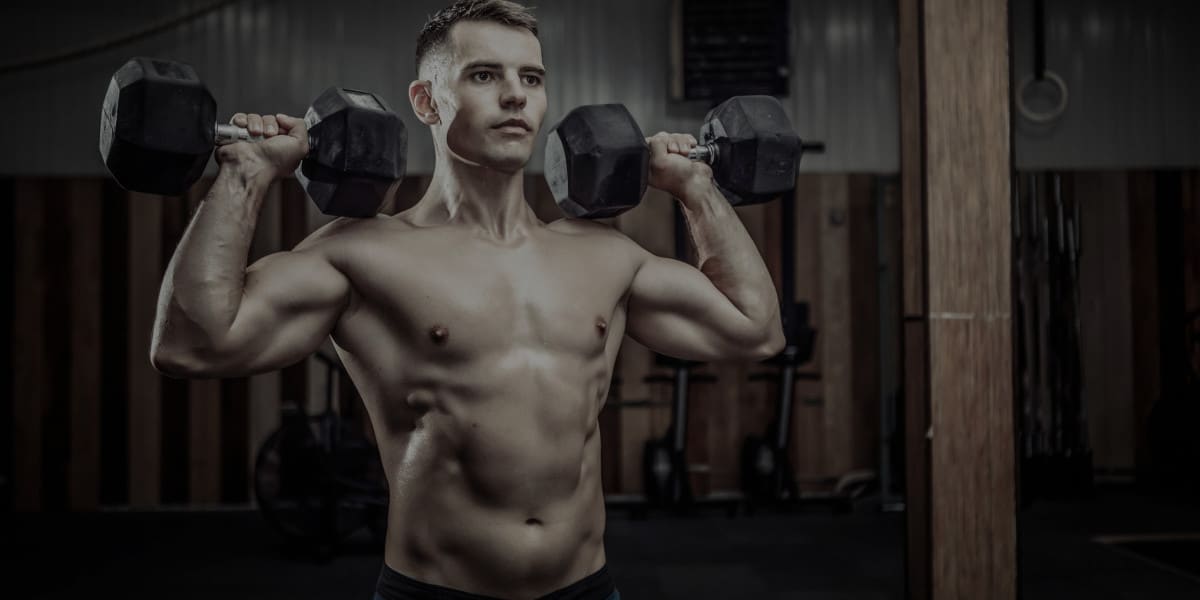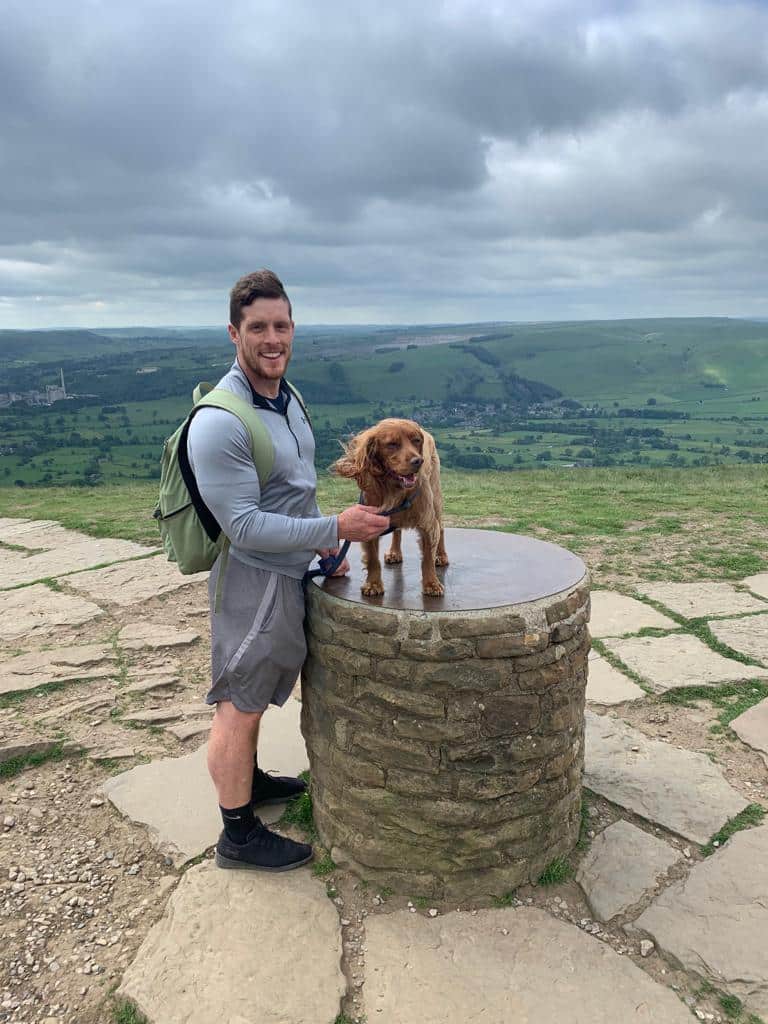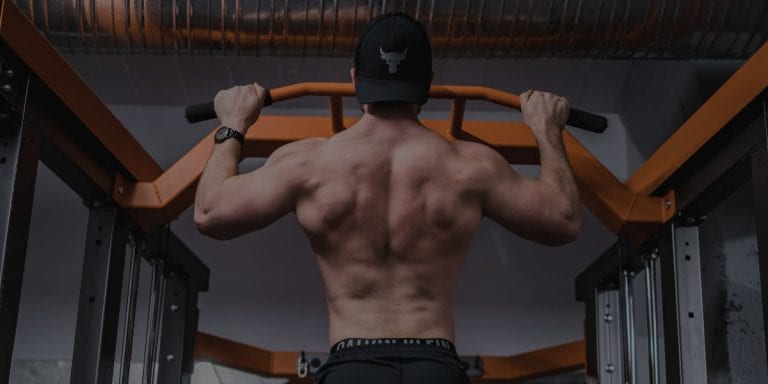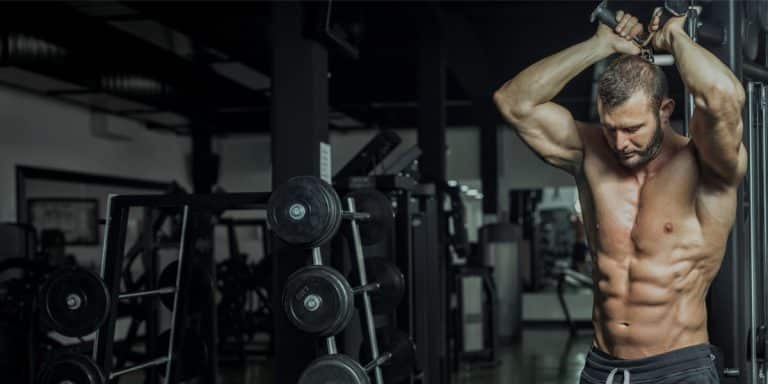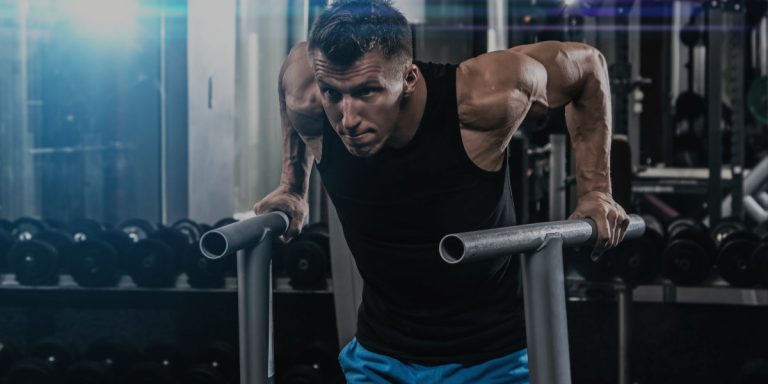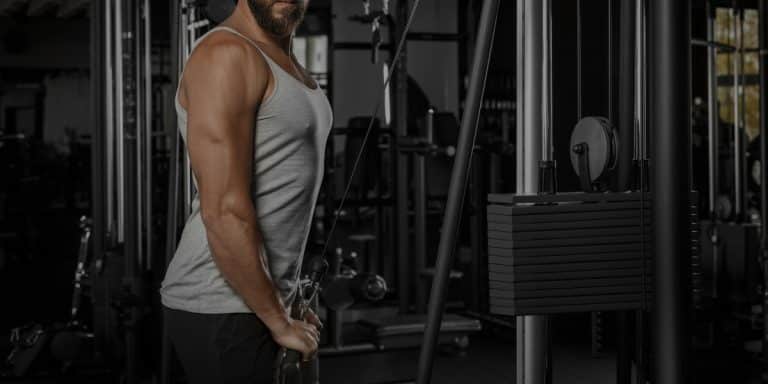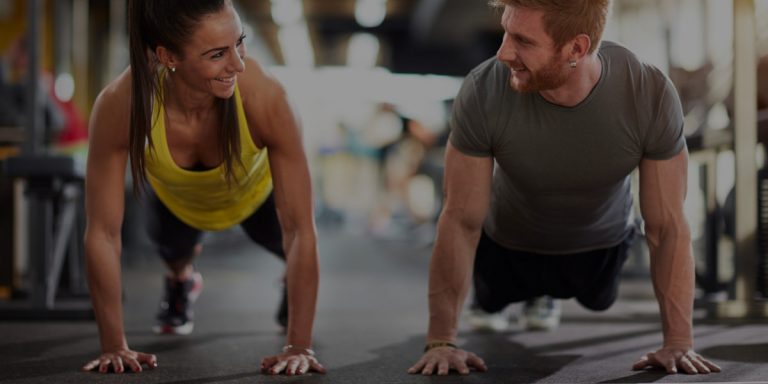Best Shoulder Exercises For Mass
Are you looking to add some size to your shoulders? Do you want to expand your width and fill out your T-shirt? Good, we’re here to help you build shoulder mass through science-backed exercises and years of experience.
Developing a strong, well-rounded set of shoulders is impressive. There’s no doubt that big shoulders can have a significant impact on your overall physical appearance.
I always think of shoulders in structural terms. Your shoulders should be the broadest part of your body. Everything else should flow down from them, helping to create the coveted V-shape or X-shape for those who don’t skip leg day.
Some people aren’t blessed with the broad-look genetics. You might have narrow shoulders, or you may be looking to build on what you already have. Either way, it’s possible to add mass to your shoulders.
The issue is knowing exactly what exercises to do in the gym to get you there. In this article I’m going to reveal my best shoulder exercises for mass.
Your shoulders are involved in a lot of upper body gym movements. But it’s important to identify the crucial exercises that focus in on adding muscle to this area.
There’s a science to this which I’ve been following for a number of years with great results. So, let’s reveal the best exercises to add mass to your shoulders and then follow up with the science behind the method.
My Top 6 exercises for shoulder mass
1. Standing overhead press
Type of movement: Compound
Area of shoulder activated: Primarily front deltoid, lateral and rear deltoid secondary
Rep range: 6-8 reps
The standing overhead press is the king when it comes to building mass on the shoulders. It’s one of the true tests of strength of all the gym exercises.
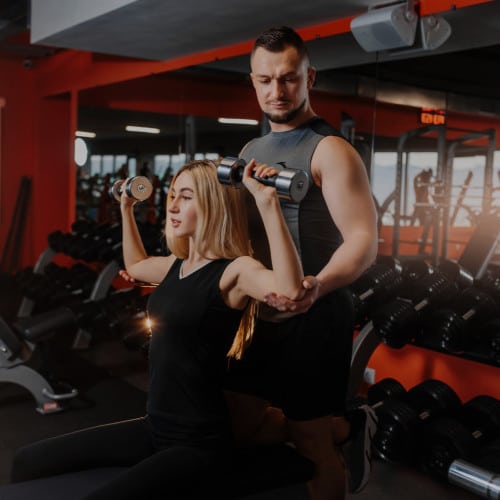
As it’s a pressing exercise, it mainly works the front (anterior) deltoids. But as this is a big compound exercise, it will work your lateral and posterior sections too.
If you want to engage your side delts a little more, just take a wider grip. This has been shown to activate your lateral delts to a greater extent when compared to a narrow grip.
The standing overhead press is an exercise you can load up with weight. And you know what heavy weight builds? Dense muscle.
But it’s also a humbling exercise. Once you get towards your maximum overhead weight, adding just 2.5kg to the bar is an achievement.
There are different variations of a standing free-weight overhead press (OHP). These can be performed with dumbbells or a barbell. You can stick with a strict military press or add in a knee jerk to help get the heavy weight up. Either way, it’s best to stick to a lower rep range with the standing overhead press.
A study in the Journal of Strength and Conditioning found the standing dumbbell press to produce more activation in the anterior, lateral and posterior deltoids than other standing or seated overhead presses.
However, once you hit certain loads, heavier dumbbells can be awkward to manoeuvre into a standing shoulder position ready to press. For this reason, I prefer the standing barbell press, which can be racked into position at the right height. This movement is also highly effective in activating all the deltoid heads. Good to know.
It’s worth saying, if you get bored or stall in progress after a number of weeks, switch the overhead press variation around. They are all effective in building shoulder mass and it’s always good to freshen things up after a while.
2. Shoulder press machine (plate loaded)
Type of movement: Compound
Area of shoulder activated: Primarily front deltoid, lateral and rear deltoid secondary
Rep range: 6-8 reps
A plate-loaded shoulder press machine is a favourite for bodybuilders and strength trainers. That tells you something: it’s effective.
The shoulder press machine is similar to the standing overhead press and operates the same type of movement pattern. It’s not quite as effective as the standing OHP, but it’s worth having in your routine. Let me explain.
The main differences with the shoulder press machine are that you’ll be seated and there’s a fixed range of motion. This is particularly good for beginners as it provides you with a more controlled and stable environment. It also takes the pressure off other areas such as your lower back.
The benefit for all lifters is that you can really concentrate on activating your deltoids with the machine press. The disadvantage to this is that your rotator cuff muscles aren’t as activated in their stabilising role. But we’ll work the rotator cuff during other exercises.
Being a compound lift with your elbow and shoulder joints moving, I’d go heavy with this lift. I’d also choose plate loaded over the stack and pin machines.
Because of the more controlled nature, it’s a great exercise for progressive overload overtime. And we all know that progressive overload leads to muscle growth.
3. Chest supported lateral raise
Type of movement: Isolation
Area of shoulder activated: Lateral deltoid, plus anterior, posterior and rotator cuff
Rep range: 10-12 reps
Lateral raises are the most effective exercises when it comes to capping off those shoulders. It can really help to give you that sculpted look as this exercise specifically targets the fibres of the middle deltoid.
It will also work the other deltoid heads but to a lesser extent, as well as the important rotator cuff muscles.
There are several versions of a lateral raise you can do in the gym. One of my favourites is the chest supported lateral raise performed with dumbbells.
So, why chest supported? There are a number of reasons for this.
Firstly, leaning forward slightly puts more emphasis on the middle deltoid and away from the front deltoid. We won’t get into the physics, but it’s all to do with gravity and direct lines of force.
Positioning your chest on a bench as you lean forwards helps to activate your lateral head. It allows you to fully focus on the raise in a comfortable and supported position that takes the pressure off your lower back.
You won’t be able to lift huge numbers with this exercise, which is why a good rep range to aim for is 10-12. More volume here will help build up that muscle fibre mass.
Some trainers suggest that you internally rotate your wrists during the lift so that your little fingers are more elevated.
However, you should try the opposite. Externally rotating your wrists slightly so your thumbs are the more elevated of your digits helps to minimise front delt activation.
With any lateral raise, it’s important to note that there’s no need to raise your arms above horizontal. Doing so shifts muscle engagement over to the upper part of your trapezius. Remember, the aim with a lateral raise is to get as much middle deltoid activation as possible.
4. Cable lateral raise
Type of movement: Isolation
Area of shoulder activated: Lateral deltoid
Rep range: 10-15 reps
Another one of my favourites: the cable lateral raise. You can perform this exercise holding two handles, but I prefer this as a single arm isolation movement.
Cables are great to use in your overall workout routine as they put your muscles under constant tension. Let me give you an example.
When you’re performing standing lateral raises with a dumbbell, your deltoids will be under almost no tension at the bottom of the movement. Tension gradually increases as you raise your arm.
With a cable, as soon as you take the load from the rack, your lateral deltoid will be working. It will continue to work as you reach the top of the movement and bring it back down again. It’s this continuous resistance that stimulates efficient growth of your deltoids.
A top tip with positioning on the cable lateral raise is to think of your upper arm as half-way between being straight out to the side and straight out in front. A slow, controlled raise and descent, which increases the time under tension even further, is optimal for this exercise. Again, you don’t need to go above parallel during the lift.
Another top tip is to vary the working angle.
Your deltoids are multipennate muscles. This means that the feather-shaped muscle fibres are organised in different directions, which eventually come together at one tendon. Because of this structure, it’s important that you vary your working angles to train all the fibres of the deltoid.
As this is an isolation exercise that you can’t go particularly heavy on, higher rep numbers are favoured. The benefit is that you’ll definitely be feeling the burn by the time you’ve done 15 reps.
5. Reverse pec deck / reverse flye
Type of movement: Isolation
Area of shoulder activated: Posterior deltoid
Rep range: 10-15 reps
The pec deck is a popular machine in the gym for those training chest. But you don’t see as many people training their rear delts here.

As you sit facing the machine with your body against the back pad, you grip the handles and bring your arms back.
This specifically targets the posterior deltoids, whose job it is to move your arms back in a horizontal plane of motion.
Studies have shown this gym exercise to be highly effective in activating your rear delts. You’ll also be hitting your upper back muscles and the rotator cuff stabilisers.
You can grip the handles in two ways: in a neutral grip with your palms facing each other or with an internally rotated grip with your palms facing down.
A study in the Journal of Strength and Conditioning found that the neutral grip activated the posterior deltoids significantly more than the pronated grip.
Over the last couple of years, I’ve added the reverse cable flye into my routine. This can be done on a narrow or wide set of cables.
You can’t go heavy with this, but it’s a great movement and you can really feel those rear delts and upper back muscles working.
After some niggling injuries, this exercise has helped me to strengthen my rotator cuff too and rebalance my posture. It’s particularly good if you work at a computer all day.
6. Rope face pulls
Type of movement: Isolation
Area of shoulder activated: Posterior deltoid
Rep range: 12-15 reps
The rope face pull is another rear delt-focused exercise to help you put mass onto your shoulders. It will also work the upper portion of your traps and rotator cuff muscles.
The trick with the face pull is to imagine you are pulling from your elbows. Concentrate on contracting your posterior deltoids with an upper back and shoulder blade squeeze at the end.
To really isolate your rear deltoids, you can perform the face pull whilst lying on the floor and pulling down. Lying on the floor helps to limit the effect of gravity and helps to take your upper traps out of the situation, which can often overpower the less powerful posterior deltoids.
The trick to adding mass to your shoulders
The main muscle of the shoulder joint is the deltoid. It’s a large, thick, triangular-shaped muscle. It’s the deltoid that gives the shoulder its overall shape and appearance. It’s the deltoid we want to add mass to.
The trick is knowing the anatomy of the deltoid.
Although it’s one muscle, the deltoid can be divided into three segments based on activation patterns during different movements. The names may be familiar:
- Anterior deltoid: The front part of the muscle with the primary aim of raising your arm straight out in front of you. This is shoulder flexion.
- Lateral deltoid: Sometimes called the medial deltoid. This is the middle part that sticks out to the side. The chief role of the lateral delt is to raise your arm out to the side away from the body. This is known as abduction.
- Posterior deltoid: The rear section of the muscle whose main job is to move your arms apart horizontally.
The shoulder joint is also influenced and moved by other small muscles. The most important secondary muscles are the four that make up the rotator cuff:
- Supraspinatus
- Infraspinatus
- Teres minor
- Subscapularis
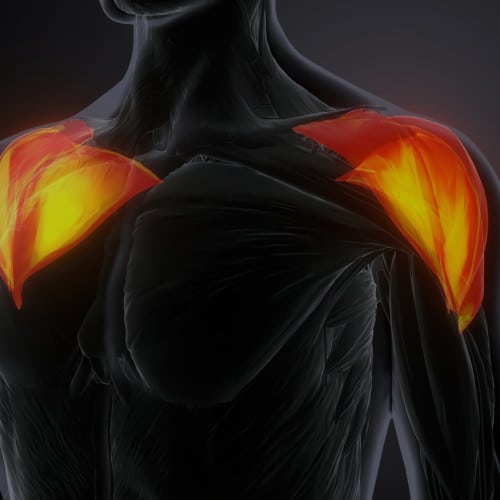
The rotator cuff muscles don’t have a significant impact on the overall size of your shoulders, but keeping them strong is important.
A strong rotator cuff will provide stability and support for the shoulder joint, allowing you to train more effectively and to your potential.
I’ve had rotator cuff injuries in the past, and believe me when I say, they play a crucial role in your shoulder training.
But to add real mass to help create those 3D shoulders, you’ll need to target and train the three main sections of the deltoid. These can also be known as the three deltoid heads. Each segment of the deltoid is activated differently depending on an exercise.
As these muscles are involved in other non-shoulder-specific training, it’s necessary to structure your workout in a smart way to get the most from your lifting.
Structuring your shoulder workout
The front part of your shoulder – the anterior deltoid – gets worked during most pressing movements when you’re training your chest.
From flat bench to incline dumbbell press, your front deltoid will be getting hit. Generally speaking, the more incline on the bench, the more deltoid involvement. I can feel my anterior deltoid working overtime on the incline barbell bench press for example, which is why I tend to swap this out for a different exercise as it’s not the primary muscle I want to train.
Because of this natural imbalance when you take your overall training routine into consideration, the lateral and posterior deltoids can often get neglected.
So, when we’re looking to add mass to our shoulders, we want to address this by focusing on movements that target the lateral and posterior sections too. A well-balanced set of shoulders also help to limit injuries so you can train harder over time.
How muscle fibre types impact mass building
When it comes to muscle fibre types in your shoulders, studies have shown there to be an even split between type 1 and type 2 muscle fibres.
As a reminder, type 1 muscle fibres are known as slow twitch. These are primarily involved in movements that require more stamina and longevity.
Type 2 muscle fibres are known as fast twitch, and are involved in explosive, powerful movements. They respond well to heavy weight and low reps. These are the lifts I love.
Understanding the muscle fibres of a certain area help to inform our training structure and rep ranges. The payback is better response and more growth for the muscles in the spotlight.
When it comes to adding shoulder size, the 50/50 fibre type ratio means we need a split between high reps with lighter weights and lower reps with heavier weights. It’s a good rule of thumb for training most muscle groups to be fair.
My usual mode of operation is to hit heavy weights and low reps on the compound lifts, and higher reps on the accessory and single-arm movements. For me, you can’t go wrong with this. It’s a technique that works for adding mass to shoulders too.
Final thoughts on building shoulder mass
The journey to build true shoulder mass is not a quick one. But like anything worth pursuing, it’s worth doing properly.
The exercises above are the best science-backed movements you can do to develop well-rounded, strong shoulder muscles that hit each of the three deltoid segments.
But it’s not just the specific gym exercises you need to consider.
Like building muscle mass anywhere, it’s essential to get your nutrition right. You’ll need to eat enough calories to fuel muscle growth. This means maintaining a calorie surplus over a period of time. This surplus in energy, alongside important macronutrients such as protein, enables your body to repair and grow muscle tissue efficiently.
The end goal, when coupled with effective and consistent training with progressive overload, is increased shoulder mass. Just what we want.
REFERENCES/SOURCES:
Overhead press most effective exercise – https://suppversity.blogspot.com/2011/08/suppversity-emg-series-m-deltoideus-m.html
Anatomical segments of deltoid – https://www.ncbi.nlm.nih.gov/pmc/articles/PMC3042752/
Journal of Strength & conditioning – overhead shoulder press https://journals.lww.com/nsca-jscr/fulltext/2013/07000/Effects_of_Body_Position_and_Loading_Modality_on.10.aspx
Journal of Strength & conditioning – hand position rear delts -https://pubmed.ncbi.nlm.nih.gov/23302754/

